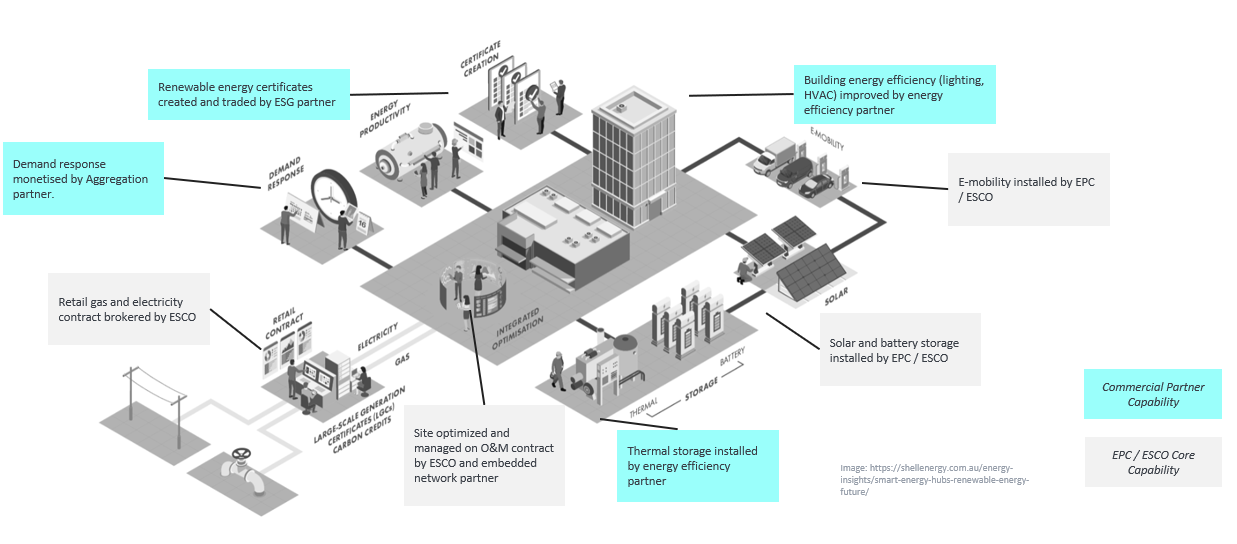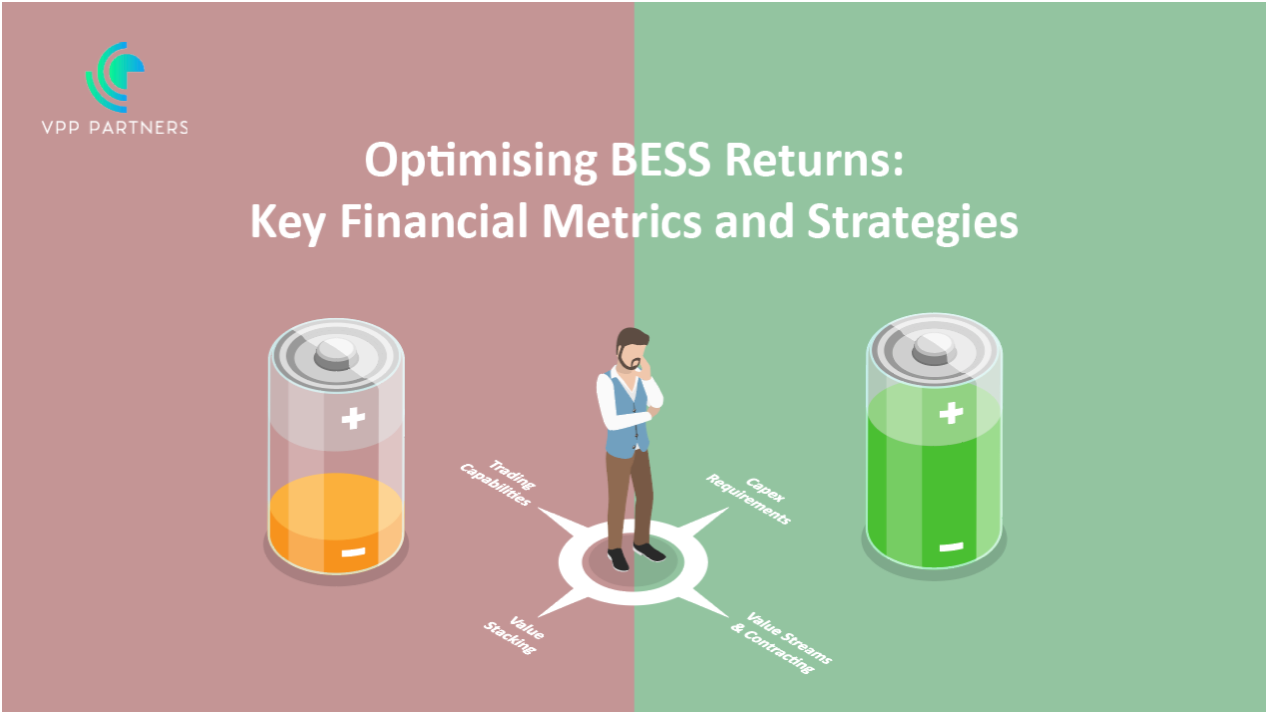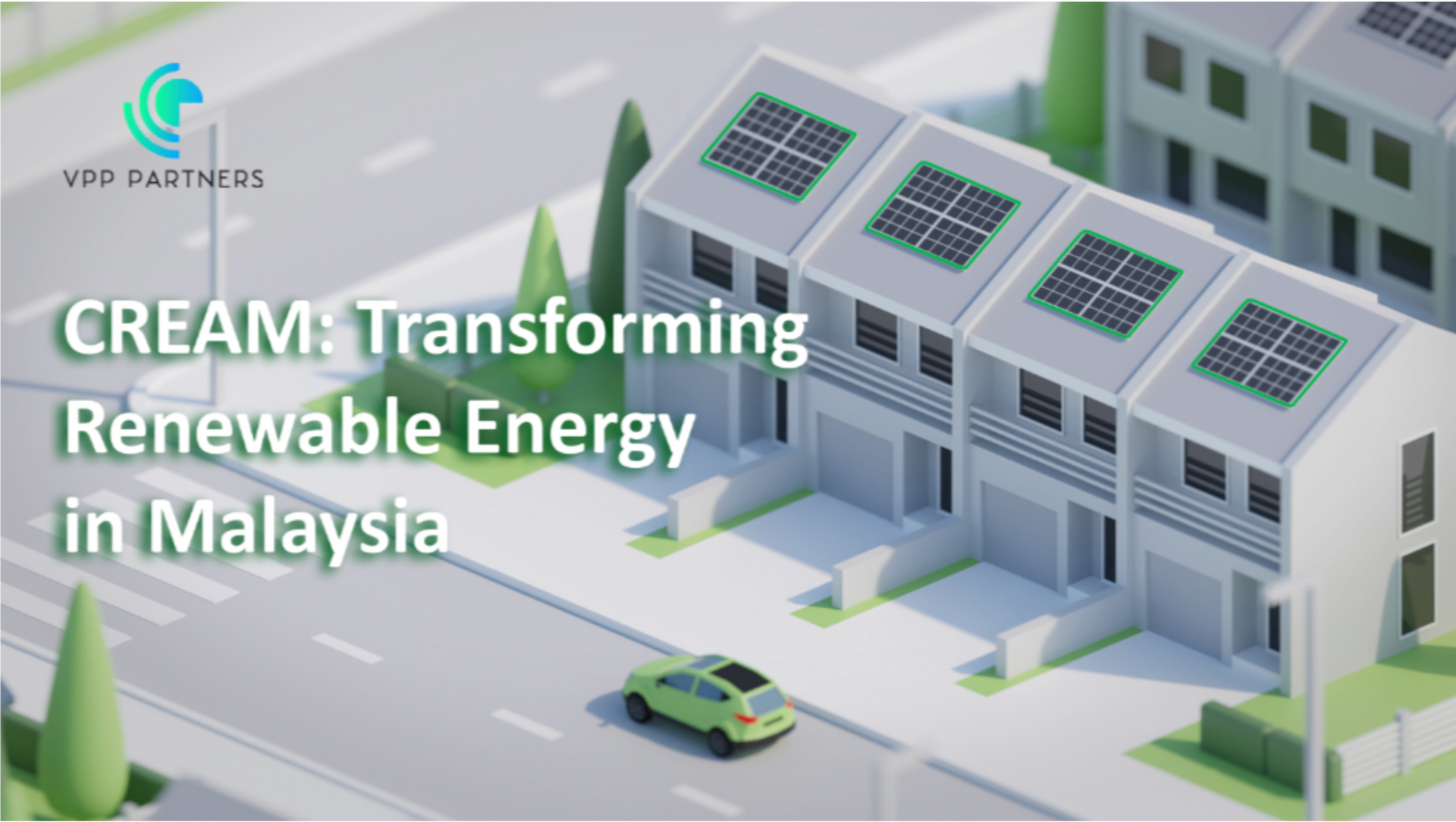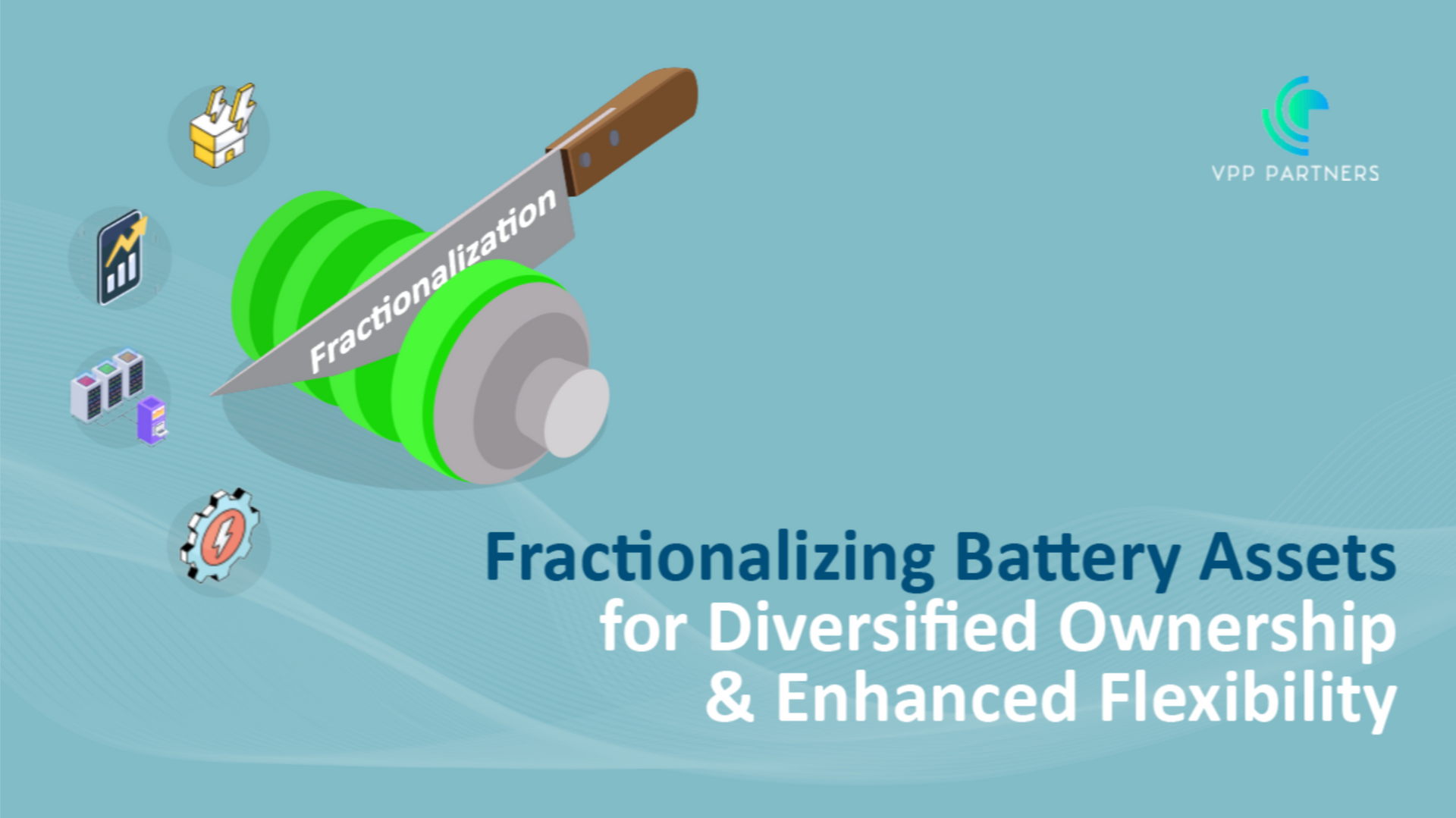Unlocking the Power of Smart Energy Hubs
Creating a Sustainable and Efficient Energy Ecosystem

The energy landscape is rapidly evolving, with organisations worldwide seeking innovative ways to optimise energy consumption, reduce costs, and embrace sustainability. In this pursuit, the concept of a Smart Energy Hub is emerging as a game-changer. Smart Energy Hubs offer a transformative approach to energy management by integrating Distributed Energy Resources (DER), embedded networks (billing and customer support), and energy optimisation to unlock numerous benefits for customers, property owners, and developers. This is done by creating an environmentally friendly energy ecosystem. In this article, we delve into the key components that form a Smart Energy Hub and the potential challenges organisations face when setting them up. So, how do create a Smart Energy Hub effectively for your organisation?
Harnessing Distributed Energy Resources (DER):
DER (or behind-the-meter) represents a paradigm shift in energy generation, enabling organisations to produce power closer to the point of energy use. Solar PV systems, embedded generation, and energy storage solutions such as battery storage, are just a few examples of DER technologies that facilitate localised energy production, and storage for utilisation by the customer. By integrating these decentralised resources, organisations can reduce their dependence on traditional power plants and significantly increase the share of renewable energy in their energy mix.
Leveraging an Embedded Network:
Embedded networks provide the foundation for localised energy distribution within a specific area or community, as they are private electricity networks serving multiple end-user connections such as retirement villages or caravan parks. As organisations build Smart Energy Hubs, establishing embedded networks enables efficient distribution, metering, billing of electricity, and customer support. This localised network enables tailored energy solutions, improved coordination of DER resources, and enhanced customer experiences. Embedded networks empower organisations to maximise the value of their energy assets and effectively manage energy distribution within their sphere of influence.
Optimisation for Efficiency:
Optimising energy consumption and reducing waste are key drivers for organisations aiming to build Smart Energy Hubs. Through energy audits, implementation of energy-efficient technologies, and real-time monitoring, organisations can identify inefficiencies, balance energy supply and demand, and minimise costs. Energy optimisation techniques, such as demand-side management and renewable energy integration, ensure the Smart Energy Hub operates at peak efficiency. This leads to reduced carbon emissions, enhanced grid resilience, and improved energy reliability.
Organisations embracing the Smart Energy Hub concept can revolutionise their energy management practices and lead the way towards a sustainable future by supplying a lower carbon and highly resilient energy system. By combining the power of DER, embedded networks, and energy optimisation, these organisations can optimise energy generation, distribution, and consumption. The result is a resilient, efficient, and environmentally friendly energy ecosystem that reduces costs, promotes renewable energy integration, and enhances operational performance.
So, what is the difference between a Smart Hub and a microgrid?
A Smart Hub and a microgrid are two concepts related to energy management, however they have key differences. A Smart Hub focuses on localised energy management within a specific area, optimising efficiency and integrating resources such as solar, battery storage and grid electricity while remaining connected to the main grid. It aims to improve sustainability and reduce costs but relies on the grid for certain energy needs. In contrast, a microgrid is a self-contained energy system that operates independently from the grid. It prioritises energy independence, reliability, and resilience, providing continuous power supply during outages. Microgrids integrate various resources, require advanced control systems, and serve larger areas, while Smart Hubs are smaller in scale and complexity, focusing on efficiency within a building or community.
What are some of the challenges for a smart hub?
There are several challenges organisations must address when developing a Smart Hub to ensure successful implementation. Here are six key challenges we have identified arise in the process:
1. Collaboration and Integration: Developing a Smart Hub requires multiple technologies, stakeholders, and partners to collaborate together to create an integrated solution that optimises energy management effectively. Coordinating efforts and ensuring compatibility between different systems and technologies can be time consuming and frustrating.
2. Network Connections and Optimisation: Optimising network connections is essential for a Smart Hub to operate efficiently. Organisations must consider factors such as grid interconnection, communication infrastructure, and data management to ensure reliable, secure, and enhanced network connections provide the ecosystem with seamless integration and control of energy resources such as reducing energy overuse.
3. Innovative Revenue Streams: To lower the total cost of energy and achieve financial viability, organisations need to explore innovative revenue streams. This can involve participating in wholesale energy markets, engaging in demand response programs, exploring energy trading opportunities, or implementing dynamic pricing models. Identifying and leveraging these revenue streams is essential for long-term sustainability.
4. Regulatory Compliance: Smart Hubs need to adhere to evolving regulatory frameworks and standards, particularly regarding DER and embedded networks. Complying with technical and regulatory requirements can be complex, as regulations vary across regions. Organisations must stay updated with changing guidelines and ensure their solutions meet all compliance obligations to avoid legal and operational issues.
5. Balancing Increased Consumption and Grid Stability: Introducing new energy-consuming technologies, such as EV chargers or other load-intensive devices to a Smart Hub, requires careful consideration to avoid overloading the grid and causing power outages. Thorough load assessments must be conducted, and organisations should implement load management strategies, and leverage demand response capabilities to ensure the stability and reliability of the energy system.
6. Commercial Model and Stakeholder Benefits: Developing a commercially viable model that provides value and benefit to all stakeholders, including developers, property owners, and tenants, is crucial. Balancing the financial interests of different parties while delivering energy cost savings, improved sustainability, and enhanced services requires careful planning, effective contractual arrangements, and transparent communication.
Successfully addressing these challenges is vital for building a robust and effective Smart Hub. It requires collaboration, technical expertise, regulatory knowledge, and a comprehensive understanding of the specific needs and goals of all stakeholders involved. By overcoming these challenges, organisations can achieve their ESG targets, meet sustainable financing requirements and reduce their carbon footprint, all while reducing energy costs.
How can we help?
VPP Partners offers a range of solutions to help your organisation and stakeholders develop and reap the benefits of a Smart Energy Hub. We provide the modelling tools needed to create a robust and sustainable business model and utilise advanced simulations and analysis to identify exactly how your organisation can optimise the site, including estimating costs associated with planning and potential construction. We will help you develop an actionable multi-year, multi-project plan to achieve your ESG and sustainable financing requirements.



